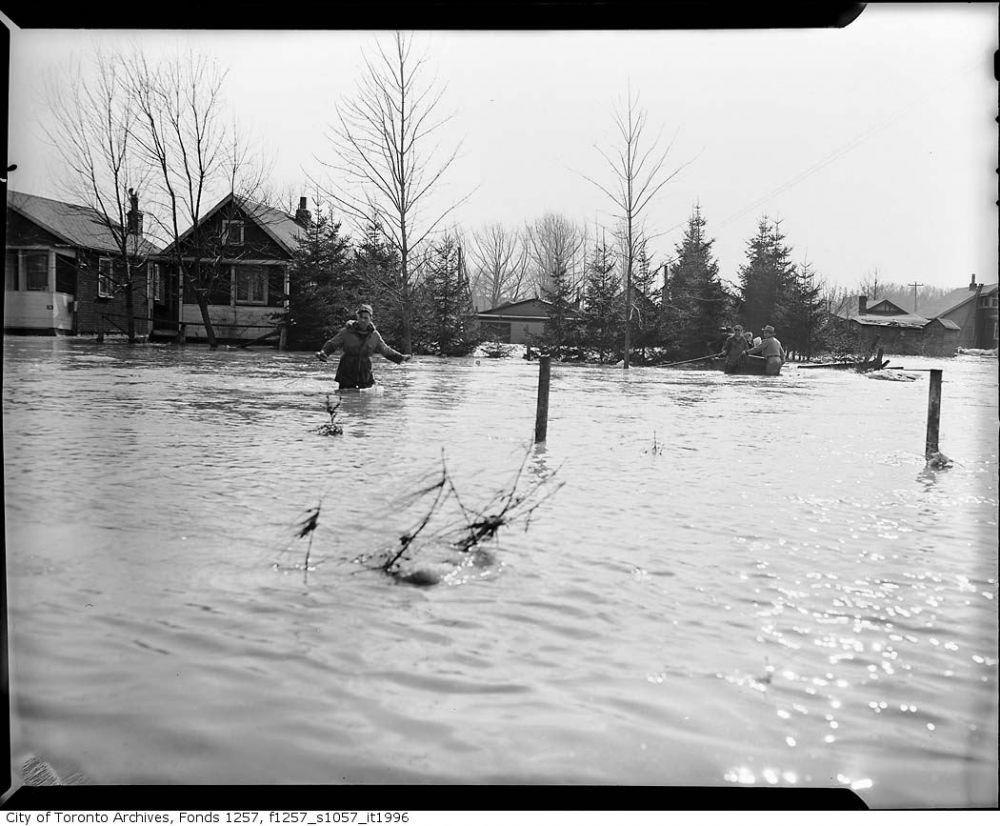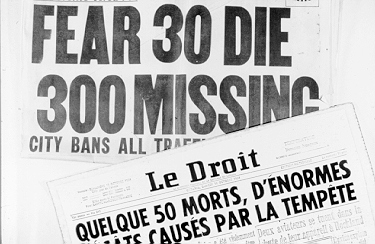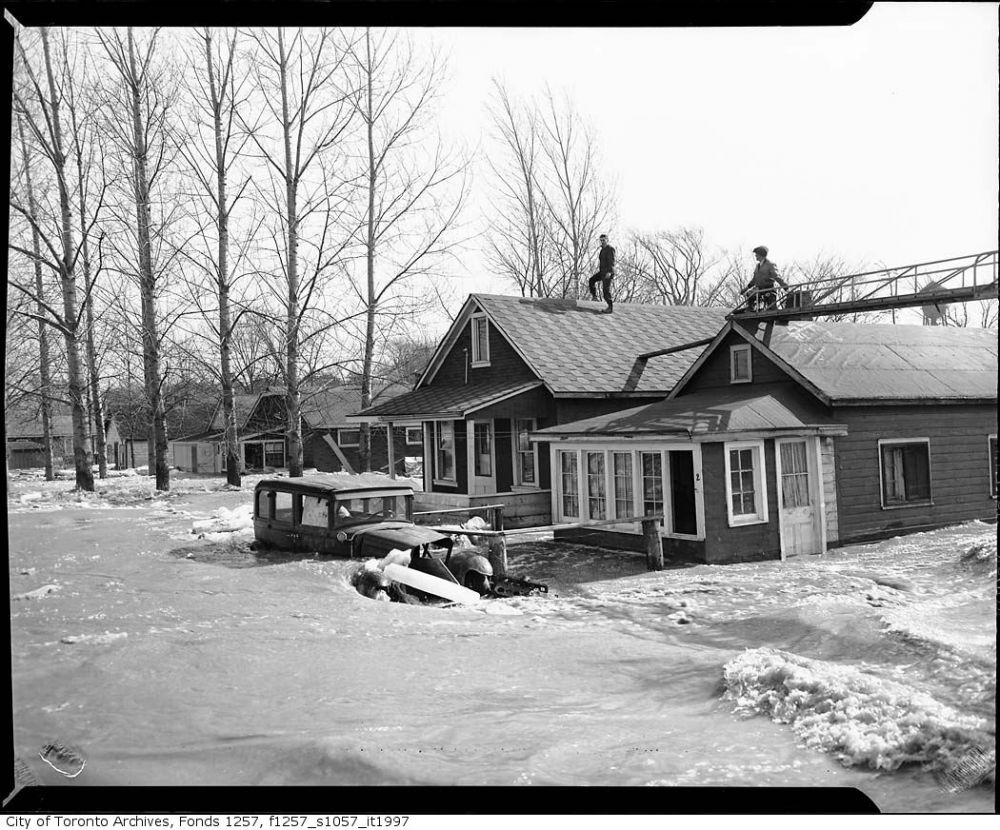I’m sitting here looking at photos from the Toronto Archives, taken on and around October 15, 1954 – a date that would definitely fit into the massively devastating category. And the first thing I notice as I go through the black and white images is just how much our city has changed. Highways and highrises have replaced what were once open fields and farmland. Looking at the expansive tree-lined scapes, one could hardly consider it an urban center.

These photos are, of course, taken in the aftermath of Hurricane Hazel, the “most famous hurricane in Canadian history.” A half century later the area has changed completely – and decades of regeneration have transformed the Humber River into one of the most stunning parts of Toronto’s urban forest.
The other thing that comes to mind is how little I actually know about this part of our collective history. In fact, I hadn’t heard much about the storm before we began researching for our tree tour. But as we complain about the occasional snow storm and weekends of rain, we should take a moment to look back on just how much that day impacted the landscape, the city and ultimately provincial policy.

"...It was a gigantic flood with smashed houses and uprooted trees bobbing like corks, everything going down the river so fast. Houses crashing into the sides of other houses, people everywhere screaming. And then you couldn't even hear the screams anymore."
— Volunteer fireman Bryan Mitchell
Toronto Star, October 14, 1984
Nearly 100 people, thousands of homes, and a huge piece of our urban forest were lost in an instant – and it’s something I can’t even imagine as I sit here with a few grey clouds overhead. In fact, along the Humber there were more deaths due to Hazel than there were across all of North America. The wind was clocked at 110Km/h and the area was hit with 285mm of rain in only 48 hours. The watershed acted as a giant funnel to almost half of the 40 billion gallons of storm water runoff, causing millions of dollars in damage and leaving its mark on the people who survived.

After the storm, the province amended the Conservation Authorities Act granting authorities across Ontario the power to take over pieces of crucial land for recreation and conservation. This would help to improve the safety of surrounding communities and avoid such devastation by future events.
 This weekend is the anniversary of Hazel, and LEAF is working with the Black Creek Conservation Project, the Humber Heritage Committee, Toronto and Region Conservation and Humber River to revisit the site and survey just how much has changed. This walking tour will look at the way the valley was, the impact of the storm and the process of regeneration that has brought it to where it stands today. If you’re unfamiliar with the story – or just interested in finding out more about this fascinating and beautiful area, join us for the tour this coming Sunday, October 16 from 10:30 a.m. to noon.
This weekend is the anniversary of Hazel, and LEAF is working with the Black Creek Conservation Project, the Humber Heritage Committee, Toronto and Region Conservation and Humber River to revisit the site and survey just how much has changed. This walking tour will look at the way the valley was, the impact of the storm and the process of regeneration that has brought it to where it stands today. If you’re unfamiliar with the story – or just interested in finding out more about this fascinating and beautiful area, join us for the tour this coming Sunday, October 16 from 10:30 a.m. to noon.
With notes from Environment Canada and Toronto and Region Conservation Authority.
